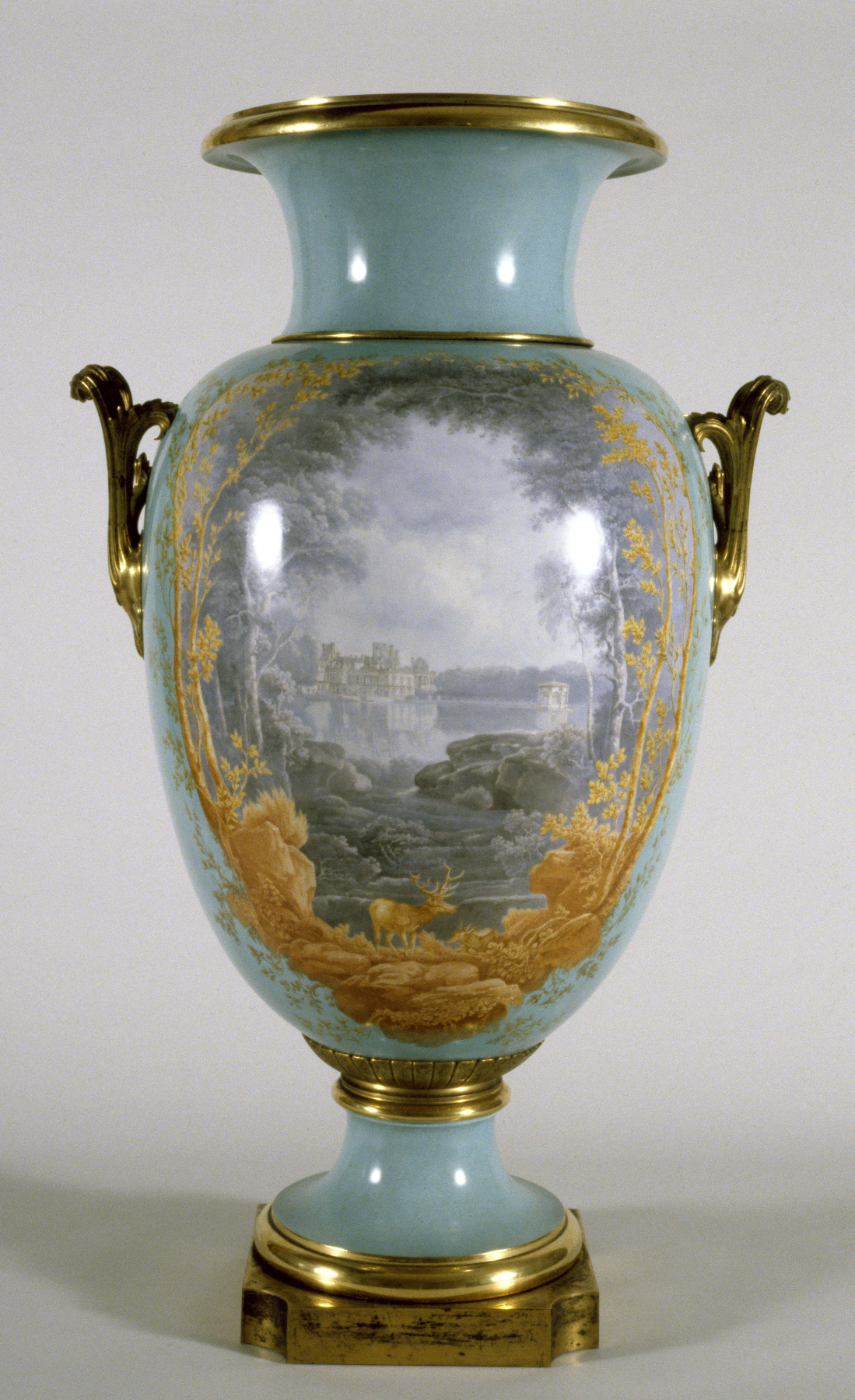Vase with Landscape Scenes
(18th and 19th Centuries )
Standing just under three feet, just under a meter tall, this monumental vase was made by the Sèvres porcelain manufactory near Paris, which was established in the 18th century with the support of Louis XV and Madame de Pompadour. The vase was part of the manufactory’s exhibit at the Paris Exposition Universelle of 1867. Such oversized works often featured on the stands of Sèvres and other ceramic producers at World’s Fairs. The competition between exhibitors was intense, and a vase like this one would have drawn the eye of visitors, as well we showcasing the technical and artistic prowess of the firm. Firing a piece of porcelain this size was a formidable challenge in itself. The report of the United States Commission on the fair described the porcelains by Sevres as “without any equal.” It later sold to William T. Walters for 5,300 French francs ($1,100), a remarkable sum at the time.
The vase was a collaborative endeavor between the designer of the vessel’s shape, the potters who molded it, the artisan who made the bronze attachments, and the painter of the large oval “reserves” (framed spaces on the two sides of the vase between the handles). These were painted by Jules André (1807-1869), who was well known as a landscape painter with links to the Barbizon school. The scenes show on one side a view of the Chateau de Fontainebleau and on the other the Fontainebleau forest. Several Barbizon painters were trained as porcelain painters or worked at the Sèvres factory. The porcelain industry, like the print industry, was a remunerative occupation for artists struggling to establish themselves in other fields.
The vase’s unusual turquoise background color was described as “vert clair” (clear green) in the factory records and may have been inspired by Asian ceramics.
Provenance
Provenance (from the French provenir, 'to come from/forth') is the chronology of the ownership, custody, or location of a historical object.
Sale [offered], Manufacture Nationale de Sèvres, Decembre, 1866 [MNS., Archives, Régistre Vv7, folio 51, no. 86]; William T. Walters, Baltimore, May 24, 1873, by purchase [MNS., Archives, Régistre Vz 13, folio 51, verso]; Henry Walters, Baltimore, 1894, by inheritance; Walters Art Museum, 1931, by bequest [Found 5 West Mt. Vernon Place, May, 1941].
Exhibitions
| 1998 | Before Monet: Landscape Painting in France and Impressionist Masters: Highlights from The Walters Collection. The Walters Art Gallery, Baltimore. |
Conservation
| Date | Description | Narrative |
|---|---|---|
| 8/18/1984 | Treatment | cleaned |
Geographies
France, Sèvres (Place of Origin)
Measurements
H: 38 in. (96.5 cm)
Credit Line
Acquired by William T. Walters, 1873
Location in Museum
Hackerman House at 1 West Mount Vernon Place: First Floor: Entryway
Accession Number
In libraries, galleries, museums, and archives, an accession number is a unique identifier assigned to each object in the collection.
In libraries, galleries, museums, and archives, an accession number is a unique identifier assigned to each object in the collection.
48.1799


